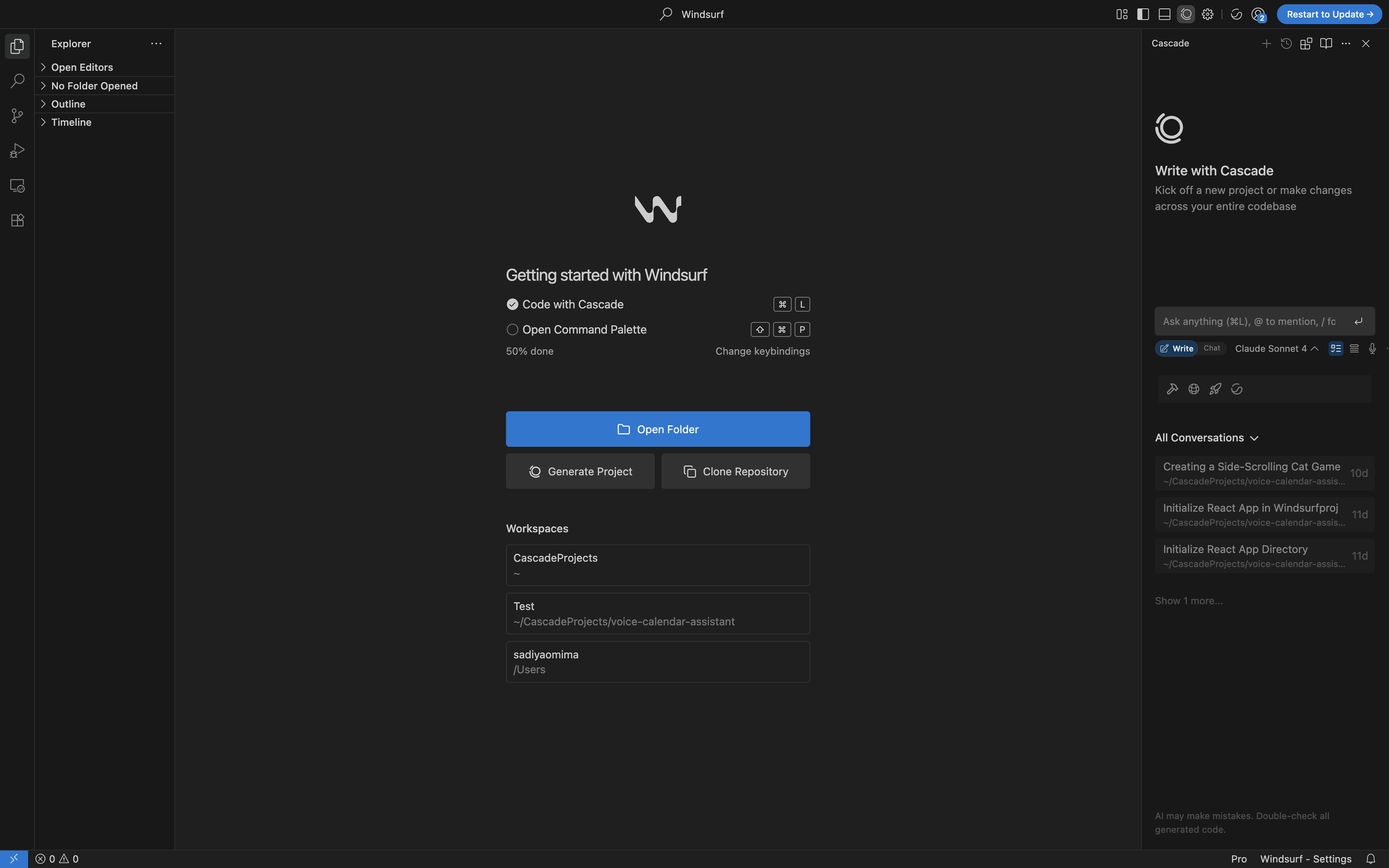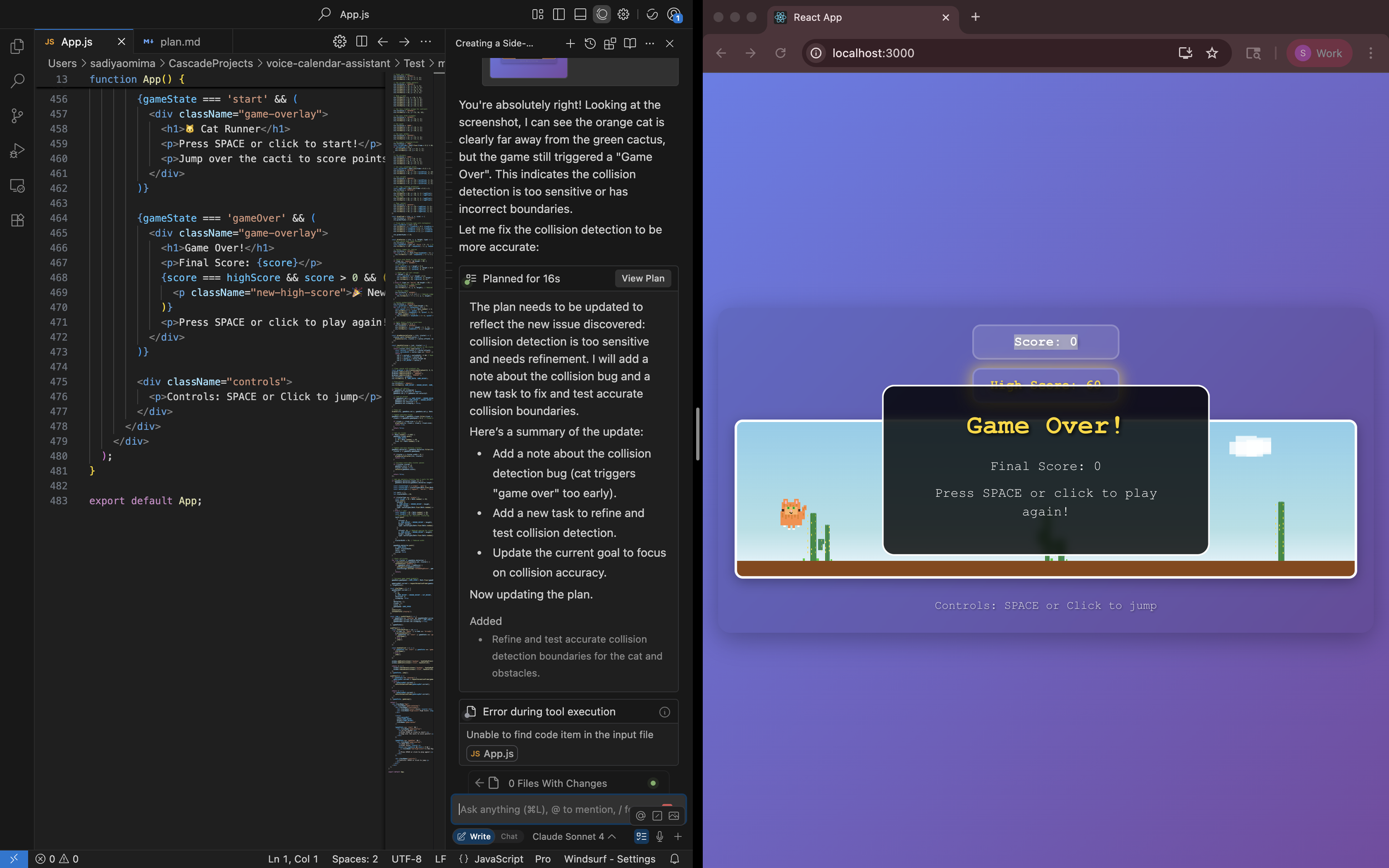[Case Study]
Windsurf AI Review for Beginner Coding
By Sadiya Omima
LinkedIn Profile
At Think Technologies, we explore how emerging AI tools can lower barriers to complex tasks. In this case study, engineering student Sadiya Omima tested Windsurf AI, an AI-powered coding platform, to see if a beginner could build a functional app without prior coding experience. The goal? Create a cat-themed version of the Chrome dinosaur game.
Introduction
The Challenge
Objective: Build a functioning React application with no prior AI coding experience.
Tool Tested: Windsurf AI’s code generation and debugging features.
Goal: Learn how AI can guide first-time developers through coding basics while producing a working application
Methodology
Sadiya approached Windsurf AI as a complete beginner. Using a screenshot of the original dinosaur game, she requested a React-based, cat-themed version. She relied on Windsurf’s screenshot reporting tool for debugging and supplemented her learning with external tutorials to better understand the coding process
Key Findings
Progress lost if changes weren’t saved before closing
Required multiple manual steps to run the project
Explanations were often too technical for beginners
Hourly usage cap disrupted workflow
The Good
Clean, beginner-friendly interface
Fast code generation with clarifying prompts
Real-time code previews for instant feedback
Screenshot and feedback tool that simplifies troubleshooting
The Pain Points
Results
Despite the hurdles, we successfully built and played a working cat-themed Chrome dinosaur game. Windsurf AI generated a usable React codebase and provided valuable debugging support. While it didn’t completely remove the learning curve, it gave a practical entry point for beginners exploring AI-generated coding
Feature Evaluation
From a beginner’s perspective, a few enhancements would make Windsurf AI more accessible:
No-Code Customization: Easier ways to modify themes and features without coding.
Beginner-Friendly Debugging: Clearer explanations of errors and fixes.
Interactive Walkthroughs: Step-by-step onboarding to help first-time users get started quickly
Pricing Breakdown
Free Plan – $0/month
2-week Pro trial included
25 prompt credits per month
Unlimited Fast Tab & SWE-1 Lite
Unlimited commands & previews
1 app deploy per day
Pro Plan – $15/month
Everything in Free
500 prompt credits per month
Access to premium models (OpenAI, Claude, Gemini, Mistral, etc.)
SWE-1 model credits
Up to 5 app deploys per day
Teams Plan – $30/month (per user)
Everything in Pro
500 prompt credits per user per month
Centralized billing and admin dashboard
Priority support
Automated zero data retention
Enterprise Plan – Starting at $60/month (per user)
Everything in Teams
1000 prompt credits per user per month
Role-based access control and SSO
Highest priority support
Dedicated account management
Hybrid deployment options
Discounts for 200+ users
Insight from our case study: The free trial provided a useful first look at Windsurf AI, but the strict hourly usage cap became a limiting factor for beginners trying to learn and build continuously. Paid tiers remove some of these bottlenecks, making them more practical for serious learners or teams
Conclusion
This case study shows that AI-powered coding platforms like Windsurf can significantly reduce the barriers for beginners. While the experience wasn’t perfect, it highlighted how AI can empower new learners to build functional apps faster. For students, hobbyists, and first-time coders, Windsurf provides a promising starting point—especially when paired with outside tutorials for added clarity.
Interested in exploring how AI tools like Windsurf can support your organization?
Contact Think Technologies to learn how we help teams adopt and scale AI for real-world impact.




